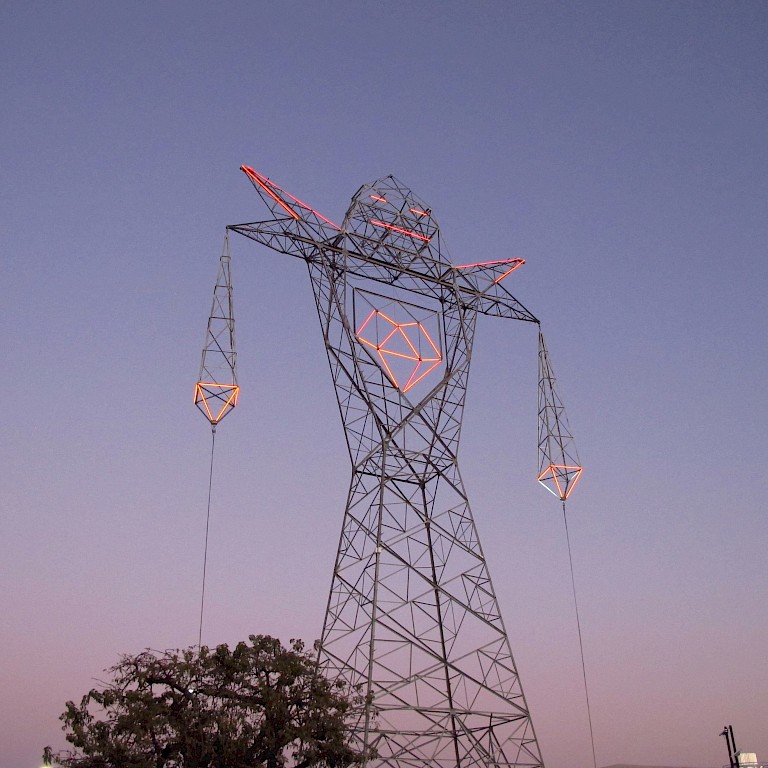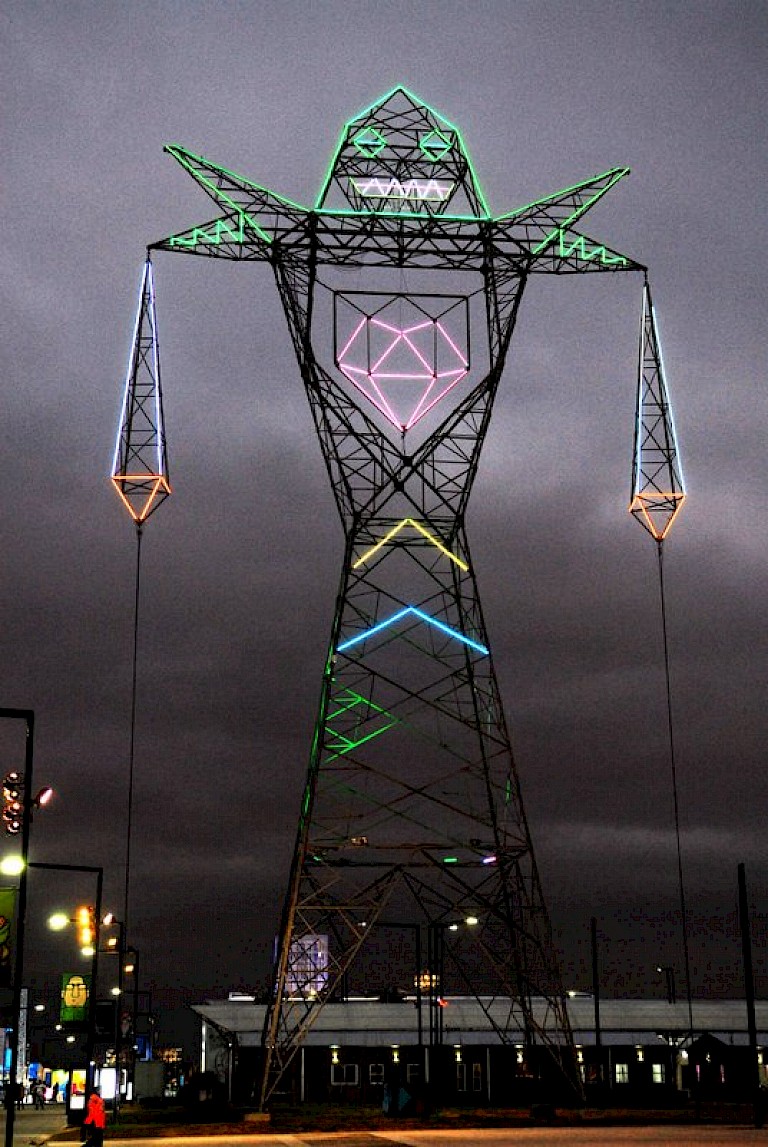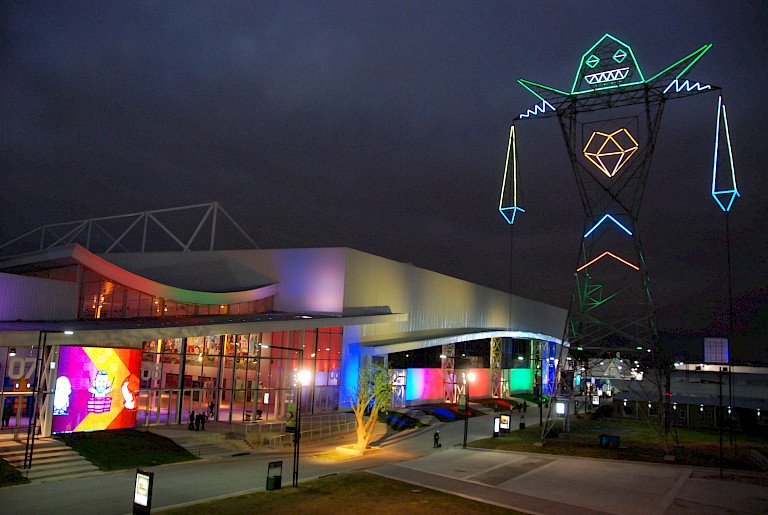



The collective is inspired by the wire supports and high voltage to create an illuminated giant in Buenos Aires. Formed by a wire frame that it is almost 150 feet high, which at first looks like a common electricity pylon, something normal. But soon reveals itself as an intervention to the daily life of the imaginary shoulder spikes and arms hanging at your sides. Neon lights are connected to a series of beams in which the night, the structure turns on and emits brightness. The chest area, or the "heart", creates patterns as the face of the robot animates in various moods with smiles and winks look.
However, the work emphasizes a job that has become recurrent in the DOMA approach: the concept that every action stimulates a reaction and from this create a fantastic universe, absurd as to become playful, directly revering society where they live and changing shades existing on our routine. What once seemed just another electrical tower of high voltage, shown as a giant robot silhouette and skeletal almost like something impressive until the neon lights all over your face make her a charismatic creature.
This can be referring to in science fiction stories, popular automatons or to the Japanese series calls "tokusatsus" where you could see all kinds of robots that turned from cars, belongings of the day-to-day. In all matters, the work of this group as well as a fun-looking installation is also an invitation to creativity and play with the look and imagination, from a simple power tower.
Doma is an important group of urban art scene in Argentina, making works that dialogue with everyday life and approaching art themes contemporary that are accessible to multiple looks, from one expert even a simple art lover. The idea of the work is closely linked to the aims of the Tecnopolis fair that promotes varied knowledge within a transdisciplinary space. In addition to its aesthetic value that has an interesting objective in the context of public space.
The project was designed from the concept of the show Technopolis, in which the function is to integrate technology and ecology in other disciplines. If the intention of the work is to be linked to the concept of electric technology, and current use of this resource, such as facilities which negatively intervene in urban areas, polluting the horizon. Thus, the idea was to transform the object in this urban space, something negative to something positive to look completely dialogued with the approaches brought at the fair, prepending artistic knowledge.
All copyright belongs to Shanghai Academy of Fine Arts, Shanghai University.



